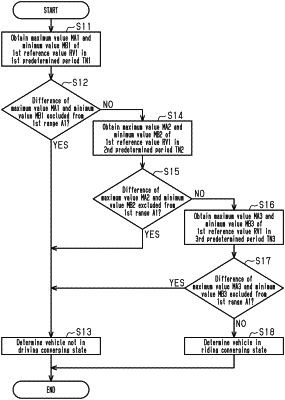| CPC B62M 25/08 (2013.01) [B62M 6/45 (2013.01); F16H 2059/003 (2013.01); F16H 2061/009 (2013.01); F16H 2061/0223 (2013.01)] | 21 Claims |

|
1. A human-powered vehicle control device for a human-powered vehicle including a transmission device that changes a transmission ratio, which is a ratio of a rotational speed of a wheel to a rotational speed of a crank axle, the human-powered vehicle control device comprising:
an electronic controller configured to control the transmission device in accordance with a control state including a first control state and a second control state that differs from the first control state,
the electronic controller being configured to actuate the transmission device to change the transmission ratio in accordance with a shifting condition including a reference value related to a traveling state of the human-powered vehicle in a case where the control state is the first control state,
the electronic controller being configured to actuate the transmission device to change the transmission ratio in accordance with an operation performed on an operation portion in a case where the control state is the second control state,
the electronic controller being configured to change the shifting condition in accordance with a converging reference value that is the reference value for a case where the human-powered vehicle is in a riding converging state, the riding converging state being based on at least one of the rotational speed of the crank axle and a force applied to a crank, and
the electronic controller being configured to change the shifting condition in accordance with the converging reference value for a case where the control state is the second control state.
|